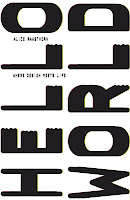Stories of art Module 3: Baroque and the Dutch golden age 1600-1700
The sixth session of this six week course at the National Gallery focusing on the art of the 17th century. This week looked at the Dutch Golden age with a lecture by the course leader, Lucrezia Walker, taking us through the different genres in Dutch art in this period from church interiors to vanitas still lives. The second half was a summing up of the six week course and a chance to ask questions. This was a really good course and I am just sorry I have to miss the next module.












